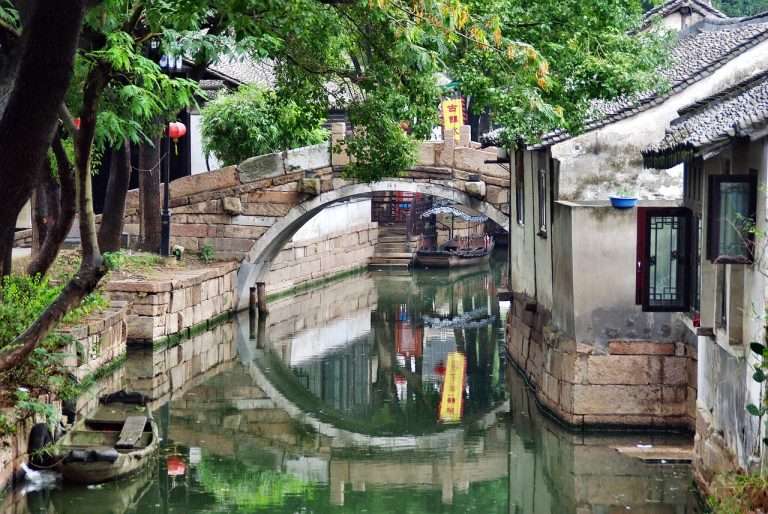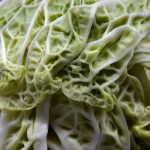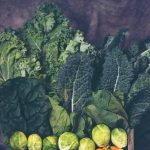Suzhou, a city steeped in history and charm, located in the heart of Jiangsu Province, China, is a destination that can be enjoyed in all seasons. Known as the “Venice of the East” for its picturesque water towns, classical gardens, and rich cultural heritage, Suzhou offers a diverse range of experiences throughout the year. Whether you’re planning a springtime escape or a winter wonderland adventure, Suzhou has something to offer in every season.
Spring: A Symphony of Blooms Spring in Suzhou is a time of natural beauty and cultural vibrancy. The city’s classical gardens, recognized as UNESCO World Heritage Sites, burst into life during this season. The most famous among them, like the Humble Administrator’s Garden and the Lingering Garden, become a kaleidoscope of colorful flowers, lush greenery, and fragrant blossoms. Visitors in spring can partake in the annual Suzhou International Silk Festival, which showcases the city’s silk-making heritage through silk exhibitions, fashion shows, and cultural performances. Additionally, taking a leisurely stroll along the ancient waterways, known as “canals,” while enjoying the pleasant weather is a must-do activity in spring.ChatGPT
Spring: A Symphony of Blooms in Suzhou
As winter’s chill gradually fades away, Suzhou, China, begins its magical transformation into a realm of natural beauty and cultural vibrancy. Springtime in Suzhou is a time when the city awakens from its slumber, and its renowned classical gardens, some of which are designated as UNESCO World Heritage Sites, burst into a riot of colors, ushering in a spectacle that is nothing short of breathtaking. In this article, we will delve deep into the enchanting world of Suzhou’s spring, exploring the iconic gardens, cultural festivals, and unique experiences that make this season a must-visit for travelers.
The Springtime Awakening of Classical Gardens
Suzhou is famed for its classical Chinese gardens, a testament to the city’s rich cultural heritage and aesthetic sensibilities. These gardens, known for their meticulously designed landscapes, tranquil ponds, and intricate architecture, take on a whole new level of splendor in spring. Among the most famous are the Humble Administrator’s Garden and the Lingering Garden, both of which date back centuries and have played vital roles in Chinese garden design history.
The Humble Administrator’s Garden, or Zhuo Zheng Yuan, is the largest classical garden in Suzhou and a masterpiece of Ming Dynasty garden artistry. As spring arrives, this garden transforms into a living canvas, with vibrant blooms bursting forth from every corner. Cherry blossoms, peonies, azaleas, and magnolias create a mesmerizing tapestry of colors. The garden’s picturesque teahouses and poetic pavilions offer idyllic spots for visitors to savor the beauty and serenity of this seasonal spectacle.
The Lingering Garden, or Liuyuan, is another gem of Suzhou’s classical gardens. This garden is celebrated for its harmonious blend of natural elements and architectural wonders. In spring, the Lingering Garden showcases its own unique floral symphony. Wisteria drapes its cascading blooms from ancient trees, while delicate plum blossoms provide a sweet fragrance that fills the air. Strolling through its meandering pathways, visitors are transported to a world of tranquility and beauty.
The Suzhou International Silk Festival
Spring in Suzhou is not just about nature’s artistry; it’s also a season of celebration and cultural exploration. The Suzhou International Silk Festival, an annual extravaganza, offers a unique opportunity to delve into the city’s rich silk-making heritage. Suzhou has long been renowned for its silk production, and this festival pays homage to the craftsmanship and artistry behind this luxurious fabric.
The festival typically kicks off in late March or early April, aligning perfectly with the arrival of spring blooms. Visitors can expect a multifaceted experience that includes silk exhibitions, fashion shows, and captivating cultural performances. It’s a chance to witness the intricate process of silk production, from silkworm rearing to weaving, and gain a deeper appreciation for this ancient craft.
One of the festival’s highlights is the Silk Fashion Show, where renowned designers and local artisans come together to showcase their creations. Attendees can marvel at the exquisite silk garments, each a work of art in itself, and even purchase unique silk pieces to take home as souvenirs. The fusion of traditional craftsmanship with contemporary fashion trends adds a dynamic dimension to the festival, making it a visual feast for fashion enthusiasts.
Cultural performances during the Silk Festival transport visitors to a bygone era. Traditional Chinese music, dance, and theater come alive on stage, providing insights into the deep-rooted cultural traditions of Suzhou and China as a whole. The festival’s vibrant atmosphere, marked by the presence of locals and tourists alike, creates a sense of unity and celebration that is emblematic of Suzhou’s warm hospitality.
Exploring the Ancient Canals
While the blooming gardens and Silk Festival are the stars of Suzhou’s spring, one should not miss the chance to take a leisurely stroll along the ancient waterways that crisscross the city. Suzhou is often referred to as the “Venice of the East” due to its intricate canal system, and spring is a particularly pleasant time to explore these historic waterways.
The city’s canals have played a vital role in its history, serving as transportation routes and sources of livelihood for generations. Today, they offer a serene backdrop for a leisurely walk or a boat ride. The gentle ripples of the water, the quaint bridges, and the traditional architecture that lines the canals create a romantic and timeless atmosphere.
One of the most famous canal areas is Pingjiang Road, a historic street that runs alongside the Pingjiang River. Lined with ancient buildings, traditional teahouses, and local shops, it’s an ideal place to immerse yourself in Suzhou’s rich cultural heritage. The reflection of cherry blossoms in the water and the distant melodies of traditional Chinese music add to the enchantment of this picturesque setting.
Another canal worth exploring is Shantang Street, known as the “Suzhou Venice.” This ancient street, dating back over 1,200 years, features preserved Ming and Qing Dynasty architecture. In spring, the street comes alive with blooming flowers, and visitors can enjoy boat rides along the canal while admiring the historic scenery.
Practical Tips for Exploring Suzhou in Spring
- Timing is Everything: Spring is a popular season in Suzhou, so plan your trip accordingly. Aim for late March to early April to catch the peak of cherry blossom season and coincide with the Silk Festival.
- Comfortable Footwear: Exploring the gardens and canal streets involves a lot of walking. Comfortable walking shoes are a must to fully enjoy your visit.
- Photography Gear: Don’t forget your camera or smartphone, as Suzhou’s springtime beauty begs to be captured.
- Local Delicacies: Savor local dishes like “Suzhou-style noodles” and “Biluochun tea” while exploring the city. These are not just meals; they are part of the Suzhou experience.
- Language: While many signs and menus are available in English, it’s helpful to have some basic Mandarin phrases handy for communication.
In conclusion, spring in Suzhou is a season of wonder, where nature and culture unite to create an unforgettable experience. The city’s classical gardens, resplendent with vibrant blooms, beckon visitors into a world of tranquility and beauty. The Suzhou International Silk Festival adds a touch of grandeur and cultural richness to this season, while the ancient canals provide a scenic backdrop for leisurely exploration. Spring in Suzhou is a symphony of blooms, a celebration of heritage, and an invitation to immerse yourself in the timeless allure of this remarkable city.
Summer: Water Town Adventures in Suzhou
As the warmth of summer envelops Suzhou, this enchanting Chinese city invites travelers to embark on a unique journey through its famous water towns. Known for their picturesque charm and timeless beauty, places like Zhouzhuang and Tongli come alive during the summer months, offering a delightful array of experiences that transport visitors to a bygone era. In this article, we will delve deep into the allure of Suzhou’s summer, exploring the captivating water towns, cultural gems, and artistic treasures that make this season a must-visit for travelers.
The Summer Splendor of Water Towns
Suzhou’s summers are characterized by warm temperatures and abundant sunshine, creating the perfect conditions for exploring its iconic water towns. These towns, with their meandering canals, traditional architecture, and idyllic landscapes, offer a glimpse into the rich cultural history of the region.
Zhouzhuang: Often referred to as the “Venice of the East,” Zhouzhuang is one of the most famous water towns in China and a popular summer destination. Located approximately 30 kilometers from Suzhou’s city center, this ancient town is a living testament to Chinese history and culture.
One of the highlights of Zhouzhuang is its serene waterways, which crisscross the town and are often lined with willow trees. Taking a traditional wooden boat ride through these canals is a quintessential Zhouzhuang experience. As you glide along the water, you’ll pass by ancient stone bridges, historic buildings, and the traditional homes of local residents, providing a glimpse into the town’s timeless beauty.
Zhouzhuang is also known for its traditional tea houses, where you can savor local teas and snacks while enjoying the soothing ambiance of the town. The ancient streets are lined with quaint shops offering handicrafts and local delicacies, making it a perfect place for leisurely strolls and souvenir shopping.
Tongli: Another gem among Suzhou’s water towns, Tongli offers a more intimate and less crowded experience compared to Zhouzhuang. It’s often referred to as the “Venice of the Wujiang River Basin” due to its extensive canal network and well-preserved Ming and Qing Dynasty architecture.
One of the unique features of Tongli is its intricately designed bridges, each with its own story and architectural style. The Three Bridges, the Taiping Bridge, and the Jili Bridge are some of the notable ones that add to the town’s charm. During the summer, these bridges provide shaded spots for visitors to escape the sun’s rays while enjoying the view.
Exploring Tongli’s canals by boat is a serene and enchanting experience. The town’s narrow waterways are adorned with hanging red lanterns, creating a magical atmosphere, especially during the evenings when they are lit up. While on the boat, you can observe the daily life of local residents and witness the time-honored customs and traditions that have been passed down through generations.
Culinary Delights in Water Towns: No visit to Suzhou’s water towns is complete without indulging in the local cuisine. Traditional dishes like “Braised Pork Belly” and “Squirrel-Shaped Mandarin Fish” offer a tantalizing taste of regional flavors. You can find these dishes at local restaurants and street vendors, allowing you to savor the authentic culinary traditions of Suzhou.
Art and Culture at Suzhou Museum
For those seeking respite from the summer heat and a deeper exploration of Suzhou’s cultural heritage, the Suzhou Museum beckons as a cultural gem. Designed by the renowned architect I. M. Pei, the museum itself is a masterpiece of modern architectural design and seamlessly blends with the surrounding traditional gardens and architecture.
The Suzhou Museum is a treasure trove of artistic and cultural riches. Its exhibits showcase both traditional and contemporary Chinese art, making it an ideal destination for art enthusiasts. The museum’s collection spans a wide range of genres, including classical Chinese painting, calligraphy, ceramics, and contemporary art pieces. It provides visitors with a comprehensive overview of China’s artistic legacy, from ancient dynasties to the present day.
One of the museum’s most famous exhibits is the collection of ancient Chinese artifacts, including rare ceramics, sculptures, and textiles. These artifacts offer insights into the craftsmanship and creativity of Chinese artisans throughout history. The museum’s emphasis on contextualizing these artifacts within the broader historical and cultural narrative of Suzhou and China adds depth and meaning to the visitor experience.
The museum’s tranquil courtyard gardens provide a serene contrast to the bustling streets of Suzhou, making it a perfect place to reflect on the art and culture you’ve encountered. The blending of traditional Chinese design elements with modern architectural concepts showcases the harmonious coexistence of old and new in Suzhou.
Practical Tips for Exploring Suzhou’s Summer Offerings
- Sun Protection: Suzhou’s summer can be hot and sunny, so bring sunscreen, sunglasses, and a wide-brimmed hat to protect yourself from the sun.
- Comfortable Clothing: Lightweight and breathable clothing is advisable for exploring water towns and walking around in the summer heat.
- Hydration: Stay hydrated by carrying a water bottle with you, especially during boat rides and outdoor activities.
- Local Etiquette: While exploring water towns, be respectful of the local customs and residents. Many of these towns are still inhabited by local families, so it’s important to maintain a considerate demeanor.
- Museum Timing: Check the Suzhou Museum’s opening hours and any special exhibitions before your visit to make the most of your cultural exploration.
Suzhou’s summer offers a unique blend of natural beauty, cultural immersion, and artistic exploration. The water towns of Zhouzhuang and Tongli provide a glimpse into China’s storied past, where canals, bridges, and traditional architecture transport visitors to a bygone era. After a day of exploration, the Suzhou Museum offers a refreshing dive into the world of Chinese art and culture, showcasing the timeless legacy of this remarkable city. So, whether you’re seeking adventure in the water towns or artistic inspiration in the museum, Suzhou’s summer has something special in store for every traveler.
Autumn: Tranquil Elegance in Suzhou
As the vibrant days of summer wane and the golden hues of fall begin to paint the landscape, Suzhou, China, undergoes a mesmerizing transformation. Autumn bestows a sense of tranquility and elegance upon this enchanting city, making it an ideal season for those seeking solace and inspiration amidst nature’s beauty. In this article, we will explore the captivating allure of Suzhou’s autumn, where resplendent gardens, culinary delights, and cultural treasures converge to create an unforgettable experience.
Autumn Foliage in Suzhou’s Gardens
Suzhou’s classical gardens, renowned for their timeless beauty, take on a new and captivating character during the autumn months. The lush greenery that defines these gardens throughout the year undergoes a breathtaking transformation as leaves turn to brilliant shades of red, orange, and gold. The atmosphere becomes infused with a sense of calm and serenity, making it the perfect season for contemplation and relaxation.
The Humble Administrator’s Garden: Among Suzhou’s iconic gardens, the Humble Administrator’s Garden (Zhuo Zheng Yuan) stands out as a quintessential destination for experiencing autumn’s tranquil elegance. This sprawling masterpiece of Ming Dynasty garden design boasts a diverse array of plant species that come alive with vibrant autumn foliage. Strolling through its winding pathways, visitors are treated to a symphony of colors as maples, ginkgo trees, and other deciduous species create a breathtaking visual spectacle.
The garden’s poetic pavilions and serene ponds provide idyllic spots for reflection and appreciation of nature’s beauty. As sunlight filters through the changing leaves and dances on the water’s surface, a sense of serenity envelops visitors, offering a respite from the hustle and bustle of daily life.
The Lingering Garden: Another jewel among Suzhou’s gardens, the Lingering Garden (Liuyuan), offers a more intimate and contemplative experience during the autumn season. This garden is known for its harmonious integration of natural elements and architectural wonders, and the fall foliage accentuates its beauty.
Wisteria vines draped with clusters of purple blossoms and plum trees adorned with delicate flowers are just a few of the highlights that await visitors in autumn. The garden’s rockeries, pavilions, and meandering pathways provide opportunities for solitude and reflection amidst nature’s artistic display.
Suzhou’s Culinary Scene in Autumn
Autumn in Suzhou is not just a visual feast; it’s also a season of culinary delight. The city’s rich gastronomic heritage shines in the autumn months, offering a delectable array of local specialties that tantalize the taste buds.
Suzhou-Style Noodles: A must-try dish in Suzhou is the renowned Suzhou-style noodles. These noodles, often served in a savory broth with a medley of toppings, are a local delicacy cherished for their delicate texture and rich flavors. The autumn season enhances the dining experience, as cooler temperatures make a hot bowl of noodles all the more satisfying.
Freshwater Fish: Suzhou is blessed with an abundance of freshwater rivers and lakes, making freshwater fish a prominent feature of its cuisine. Autumn is an excellent time to savor dishes featuring fish like the mandarin fish, a local specialty known for its tender flesh and delicate taste. Restaurants in Suzhou prepare fish in various styles, such as sweet and sour, steamed, or braised, ensuring there’s a fish dish to suit every palate.
Mouthwatering Dim Sum: Suzhou’s dim sum culture is deeply ingrained in the city’s culinary traditions. In the autumn months, dim sum restaurants offer an extensive array of bite-sized delights, from dumplings filled with juicy pork to fluffy buns stuffed with savory ingredients. Dim sum outings in Suzhou are a culinary adventure, with each restaurant offering its own unique specialties and flavors.
Food Tours in Suzhou: To fully immerse yourself in Suzhou’s gastronomic treasures, consider embarking on a food tour through the ancient streets of the city. Local guides can lead you to hidden gems, street vendors, and family-owned restaurants, providing insights into the city’s culinary heritage. A food tour is not only a delicious experience but also an opportunity to learn about the culture and history of Suzhou through its cuisine.
Exploring Suzhou’s Autumn Culture
Beyond the gardens and dining experiences, Suzhou offers a rich cultural tapestry to explore during the autumn season.
Cultural Performances: Suzhou’s theaters and opera houses come alive with captivating performances during the autumn months. Traditional Chinese music, opera, and dance take center stage, offering visitors a chance to immerse themselves in the city’s artistic heritage. The harmonious blend of music and dance creates a captivating atmosphere that reflects the essence of Suzhou’s cultural traditions.
Tea Culture: Autumn is an ideal time to experience a traditional Chinese tea ceremony in one of Suzhou’s ancient teahouses. Sipping delicate teas, such as Biluochun or West Lake Longjing, is not just a beverage choice but a cultural experience that connects visitors with the essence of Chinese tea culture. Teahouses often feature serene garden settings or overlook picturesque canals, providing an inviting backdrop for relaxation and reflection.
Suzhou Silk Museum: For those interested in delving deeper into Suzhou’s silk-making heritage, a visit to the Suzhou Silk Museum is a must. This museum showcases the intricate process of silk production, from silkworm rearing to weaving and dyeing. Visitors can gain a profound understanding of the craftsmanship behind this luxurious fabric and even purchase exquisite silk products as souvenirs.
Practical Tips for Exploring Suzhou in Autumn
- Timing: Plan your visit for the peak of autumn foliage, which typically occurs from late October to early November. This is when the gardens are at their most resplendent.
- Comfortable Attire: Suzhou’s autumn weather is generally mild, but layers are advisable for cooler evenings. Comfortable walking shoes are essential for exploring gardens and streets.
- Local Etiquette: Show respect for the serene environment of Suzhou’s gardens by speaking softly and refraining from touching plants or artifacts.
- Language: While many signs and menus are available in English, having some basic Mandarin phrases can enhance your interactions and experiences in Suzhou.
Autumn in Suzhou is a season of tranquil elegance, where nature’s artistry and culinary delights converge to create a rich tapestry of experiences. The city’s classical gardens, adorned with the hues of fall foliage, offer a serene retreat for contemplation and reflection. Suzhou’s culinary scene shines with local specialties, inviting visitors to savor the flavors of the season. Cultural performances and historical sites add depth to the autumn experience, making it a time when Suzhou’s rich heritage and natural beauty are at their most captivating. Whether you seek solace or inspiration, Suzhou’s autumn awaits with open arms and a warm, inviting ambiance.
Winter: A Cozy Cultural Retreat in Suzhou
As the temperatures in Suzhou begin to dip and a gentle chill fills the air, the city undergoes a transformation into a cozy haven of cultural richness and artistic splendor. Winter in Suzhou is a season of enchantment, where historic streets shimmer with traditional Chinese lanterns, theaters burst to life with captivating performances, and ancient teahouses invite visitors to experience the soothing elegance of a traditional Chinese tea ceremony. To add to the allure, the Suzhou Silk Museum beckons with its tales of silk production history, offering an opportunity to shop for exquisite silk products that serve as timeless souvenirs. In this article, we will delve into the cozy and culturally rich world of Suzhou’s winter, where history, art, and tradition converge to create a memorable retreat.
Winter Illumination: Traditional Chinese Lanterns
Winter in Suzhou is a time when the city’s historic streets and alleys don a festive and charming aura, thanks to the enchanting glow of traditional Chinese lanterns. These lanterns, often adorned with intricate designs and vibrant colors, illuminate the cityscape, creating a magical atmosphere reminiscent of ancient China.
The glow of lanterns lining the streets transforms Suzhou’s historic quarters into a dreamlike setting, perfect for leisurely strolls and exploration. Iconic areas like Pingjiang Road, known for its well-preserved Ming and Qing Dynasty architecture, come alive with the warm light of lanterns, providing an ideal backdrop for an evening of cultural immersion and relaxation.
Theater and Opera Performances
Suzhou’s rich artistic heritage takes center stage during the winter months, as the city’s theaters and opera houses come alive with captivating performances. Traditional Chinese music, opera, and dance performances provide a window into the cultural traditions that have thrived in Suzhou for centuries.
Pingtan Opera: Pingtan, a traditional storytelling art form with origins in Suzhou, takes on a special significance in the winter season. Performers, often accompanied by traditional instruments like the pipa and the xiao, recount ancient tales and legends through poetic and melodic narratives. The intimate and evocative nature of Pingtan makes it a must-experience cultural event in Suzhou during the winter.
Kunqu Opera: Suzhou is renowned as the birthplace of Kunqu Opera, one of the oldest forms of Chinese opera. This stylized art form, characterized by its elegant movements and poetic librettos, is celebrated through winter performances that showcase the enduring beauty of Kunqu Opera. Audiences are transported to a world of refined aesthetics and historical narratives.
Ancient Teahouses and Traditional Chinese Tea Culture
Suzhou’s winter offers a perfect opportunity to delve into the world of traditional Chinese tea culture. The city is home to ancient teahouses where visitors can partake in a timeless ritual—a traditional Chinese tea ceremony. These teahouses, often located in historic settings, provide an authentic and immersive experience that allows guests to savor delicate teas while learning about their significance in Chinese culture.
Biluochun Tea: Suzhou is renowned for its production of Biluochun tea, a type of green tea known for its delicate flavor and distinctive spiral shape. Winter is an ideal time to savor this exquisite tea, as its fresh and crisp taste is best appreciated in cooler weather. Many teahouses in Suzhou serve Biluochun tea and offer educational experiences that include the proper way to brew and enjoy this fine tea.
Cultural Immersion: Participating in a traditional tea ceremony is not just about enjoying a beverage; it’s an opportunity to immerse yourself in the customs and etiquette of Chinese tea culture. The ceremony often involves precise rituals, from choosing the right teapot to mastering the art of pouring tea. Tea masters guide guests through these rituals, providing insight into the profound philosophy and history that surround the world of Chinese tea.
The Suzhou Silk Museum: A Journey Through Silk Production History
Suzhou’s silk production history is a tale of craftsmanship, innovation, and luxury. To gain a deeper understanding of this integral part of the city’s heritage, a visit to the Suzhou Silk Museum is a must during the winter season. This museum offers a comprehensive exploration of the silk-making process, from the cultivation of silkworms to the creation of exquisite silk products.
Silk Production Exhibits: The Suzhou Silk Museum features a range of exhibits that showcase the various stages of silk production. Visitors can observe silkworms at different life cycles, learn about the intricate process of silk spinning, and witness the dyeing and weaving of silk threads. The museum provides a behind-the-scenes look at the craftsmanship and artistry that go into creating this luxurious fabric.
Cultural Significance: Silk holds a special place in Chinese culture and history, often symbolizing wealth, beauty, and refinement. The Suzhou Silk Museum delves into the cultural significance of silk, exploring its role in ancient rituals, fashion, and trade along the Silk Road. The museum’s exhibits also highlight the influence of silk on art and literature throughout China’s history.
Shopping for Exquisite Silk Products: After exploring the museum’s informative exhibits, visitors can browse the museum’s gift shop, which offers a wide selection of exquisite silk products. From silk scarves and garments to intricately embroidered textiles and accessories, the museum’s shop is the perfect place to find high-quality souvenirs that encapsulate the essence of Suzhou’s silk heritage.
Practical Tips for Enjoying Suzhou’s Winter Retreat
- Winter Clothing: Suzhou’s winter is relatively mild, but it’s advisable to dress in layers and carry a light jacket or coat for cooler evenings.
- Performance Schedules: Check performance schedules in advance, especially for traditional opera and theater performances, as they may have limited showtimes.
- Tea Ceremony Reservations: If you plan to experience a traditional Chinese tea ceremony, consider making reservations at teahouses in advance, especially during peak tourist seasons.
- Museum Hours: Verify the opening hours and any special exhibitions at the Suzhou Silk Museum before your visit.
- Language: While many signs and menus are available in English, having some basic Mandarin phrases can enhance your interactions and experiences in Suzhou.
Winter in Suzhou is a season of cozy cultural retreat, where the city’s historical streets come to life with traditional lanterns, theaters resonate with artistic performances, and ancient teahouses invite visitors to immerse themselves in the elegance of Chinese tea culture. The Suzhou Silk Museum offers a journey through the city’s silk production history, providing insights into a craftsmanship that has defined Suzhou’s heritage for centuries. Whether you seek to savor the warmth of a tea ceremony, witness captivating cultural performances, or shop for exquisite silk souvenirs, Suzhou’s winter provides a rich tapestry of experiences that celebrate the city’s enduring traditions and artistic treasures.
Practical Tips for Visiting Suzhou Year-Round
Visiting Suzhou year-round is a delightful experience, offering a diverse array of cultural, natural, and culinary treasures to explore. To make the most of your trip and ensure a seamless visit to this enchanting Chinese city, it’s essential to be well-prepared. In this comprehensive guide, we provide practical tips that will enhance your journey and help you navigate Suzhou’s seasonal variations and cultural nuances.
1. Pack Accordingly
Suzhou experiences distinct seasons, each with its own weather patterns and unique charms. To ensure comfort and enjoyment during your visit, pack appropriate clothing and accessories based on the season:
- Spring: Spring in Suzhou brings moderate temperatures and blooming gardens. Light layers, comfortable walking shoes, and an umbrella or raincoat are advisable as occasional showers are common.
- Summer: Summers in Suzhou can be hot and humid, so lightweight, breathable clothing, sun protection (hat, sunglasses, sunscreen), and plenty of water are essential. A portable fan or a cooling towel may also come in handy.
- Autumn: Autumn offers pleasant weather, but it can be slightly cool, especially in the evenings. Pack layers and a light jacket or sweater. Comfortable walking shoes are essential for exploring gardens and historic streets.
- Winter: Winters in Suzhou are chilly, so bring warm clothing, including a heavy coat, gloves, and a hat. Layers are key, as indoor spaces may be heated. A good pair of walking shoes with insulation is important for comfort during sightseeing.
- General Tips: Regardless of the season, comfortable walking shoes are a must for exploring Suzhou’s gardens, streets, and cultural attractions. Don’t forget to pack any necessary electronic devices, travel adapters, and a portable charger to stay connected and capture memories.
2. Learn Some Mandarin
While many people in Suzhou’s tourist areas, hotels, and restaurants speak English to some extent, having a basic knowledge of Mandarin can greatly enhance your experience and interactions with locals. Learning a few common phrases, greetings, and numbers can go a long way in navigating the city and making connections with residents. It’s also helpful to have a translation app or dictionary on hand to bridge any language gaps.
3. Plan Ahead
Suzhou is a city rich in cultural events and festivals, so planning your visit in advance can help you make the most of your time there. Consider the following tips:
- Research Events: Check the specific events, festivals, and exhibitions happening during your visit. Suzhou hosts a variety of cultural festivals and performances throughout the year, and attending these can provide a deeper understanding of local traditions and artistry.
- Ticket Reservations: For popular attractions, gardens, and events, it’s advisable to book tickets in advance, especially during peak tourist seasons. This can help you avoid long lines and ensure entry to your desired destinations.
- Local Calendar: Familiarize yourself with the Chinese lunar calendar, as it plays a significant role in determining festival dates and holidays. Events like the Suzhou International Silk Festival and traditional Chinese holidays may influence your travel plans.
- Hotel Reservations: If you’re visiting during a busy season or festival, make hotel reservations well in advance to secure your accommodations. Suzhou offers a range of lodging options, from luxury hotels to boutique guesthouses.
4. Try Local Cuisine
Suzhou is celebrated for its culinary delights, which reflect the city’s rich gastronomic heritage. To fully savor the flavors of Suzhou, don’t miss the opportunity to try local dishes and snacks at both street vendors and traditional restaurants. Some local specialties to sample include:
- Suzhou-Style Noodles (苏州面): These delicate, thin noodles are served in a savory broth with a variety of toppings, such as minced pork, tofu, and vegetables. Suzhou-style noodles are a must-try dish that captures the essence of local flavors.
- Freshwater Fish (淡水鱼): Suzhou’s abundance of freshwater rivers and lakes makes freshwater fish a prominent feature of its cuisine. Dishes like “Squirrel-Shaped Mandarin Fish” and “Sweet and Sour Fish” highlight the city’s expertise in preparing fish.
- Dim Sum (点心): Suzhou’s dim sum culture is deeply rooted in the city’s culinary traditions. Dim sum restaurants offer a delightful array of bite-sized dishes, from dumplings to steamed buns, providing a unique culinary adventure.
- Biluochun Tea (碧螺春茶): Suzhou is famous for its production of Biluochun tea, a type of green tea known for its delicate flavor and spiral shape. Enjoying a cup of Biluochun tea in a traditional teahouse is a quintessential Suzhou experience.
5. Respect Local Customs
Respecting local customs and cultural etiquette is essential to ensure a harmonious and enjoyable visit to Suzhou. Here are some key customs and etiquette tips to keep in mind:
- Greeting: When meeting someone for the first time, a polite nod or handshake is appropriate. In more formal settings, a slight bow may be used.
- Public Behavior: Maintain a respectful demeanor in public places, and avoid speaking loudly or causing disruptions. Respect signs and instructions at cultural sites and attractions.
- Footwear: In many traditional Chinese homes, it is customary to remove your shoes before entering. Pay attention to cues from your host or hostess.
- Dress Modestly: When visiting temples or religious sites, dress modestly by covering your shoulders and knees. This demonstrates respect for the cultural and religious significance of these places.
- Tipping: Tipping is not a common practice in China, and it is not expected. However, it is becoming more common in tourist areas, so you can leave a small tip if you feel it is warranted.
- Gift Giving: If you plan to offer gifts, it is customary to present them with both hands. Gifts are generally wrapped, and the recipient may not open them in your presence.
- Photography: Always ask for permission before taking photos of individuals, particularly in rural or residential areas. Some attractions may have restrictions on photography.
By observing these customs and etiquette guidelines, you’ll not only show respect for the local culture but also enhance your own cultural understanding and appreciation during your visit to Suzhou.
In Conclusion
Visiting Suzhou year-round is a rewarding experience that allows you to immerse yourself in the city’s rich cultural heritage, explore its natural beauty, and savor its culinary delights. By packing appropriately, learning some Mandarin, planning ahead, trying local cuisine, and respecting local customs, you can ensure a memorable and respectful visit to this captivating Chinese city. Suzhou’s blend of tradition and modernity offers travelers a unique opportunity to discover the heart and soul of China. Whether you’re wandering through ancient gardens or enjoying a traditional tea ceremony, your journey in Suzhou promises to be a cultural and sensory delight.






